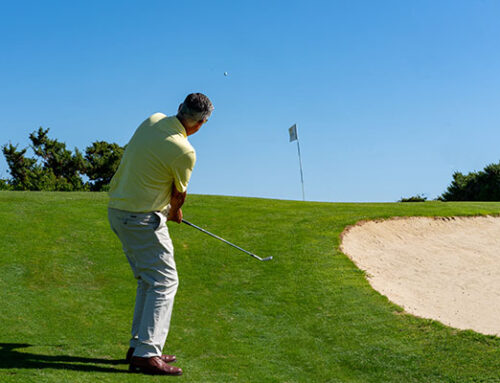HOW WE LEARN
Learning is something that we do everyday consciously and subconsciously. We are constantly registering information with our eyes, ears and through our physical contact with the world. The way in which we each interpret and store this information differs from one person to the next. We are all different in the way that we learn and process this information, and therefore one learning system can not and does not fit all.
My wife Pip, (also a golf professional), and I had the privilege of having one of our first teaching experiences in the north of Greece at a beautiful golf resort called Porto Carras where we eventually got married. We enjoyed some magical times there; made lasting friends, discovered Greek food, and enjoyed great weather and lovely beaches. Greece didn’t have much golf culture at that time, only having a total of three golf courses in the whole country, but the locals showed great interest and desire in wanting to learn how to play the game of golf. Our arrangement with the resort was that we should teach golf to the hotel guests who were mostly north Europeans. We were also asked to encourage locals to learn how to play the game. The problem was that we did not speak Greek, and at that time, English speaking Greeks were also not very common.. This did not stop us from trying. We learnt a few basic Greek words. Apparently you need to know around 10.000 words to reach near-native level, 1.000 words to have a conversation and 100 words to be able to travel. Something else we learnt is that knowing the words does not guarantee that you are able to understand the jokes, let alone tell them!! And if you add to the equation that in Greek when you say “yes” you shake your head sideways and say “neh”, you can understand the challenge of the task facing us!!
To keep a long story short, we found out we could teach golf without having to talk. We were able to get results by using demonstration and mimic and by demonstrating what the students were doing compared to what they should be doing. Funnily enough we found that with very little verbal communication, the concentration level of the students was much greater in comparison to the normal lesson where language posed no barrier, when sometimes too much can be said!!
„A picture is worth a thousand words“ they say, I couldn’t agree more. Children learn their motoric skills imitating what they see. The greatest example of this is Phil Mickelson who is actually right handed, but plays as a left hander as he learnt his golf by standing opposite his father and imitating what he saw.
At the Golf Academy all teachers speak English, German and Spanish, so language is not a problem, but we play great emphasis on “Visual Learning” as a powerful tool to help students reach the next level.
Chema Andrade
Golf Academy Director





